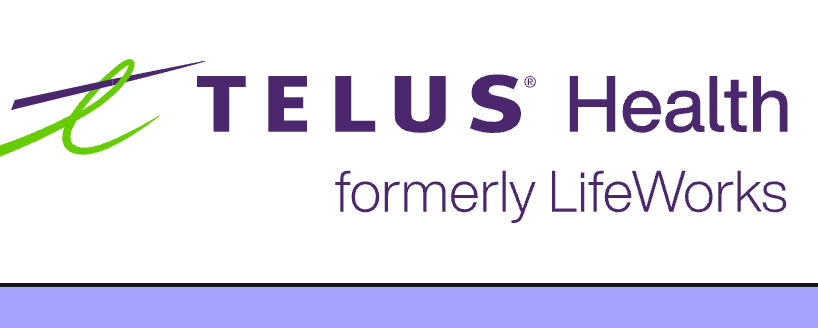Health
Online or Offline Therapy: Which One Should You Choose?

In our busy lives, where stress and mental health worries are growing, many people are turning to therapy for help. Technology has given rise to a new option: online or offline therapy. It’s similar to choosing between meeting someone in person and conversing with them online. Each has advantages, so it’s crucial to determine what feels best for you. Online therapy can be compared to a chat window, whereas offline treatment is face-to-face communication. Every option has benefits, so choose the one that best fits your needs. Making treatment work for you most conveniently and beneficially is the main goal.
The Importance of Therapy
All of us seek a helping hand whenever we feel low! Therapy is like a friendly hand reaching out when life gets tough. Also called psychotherapy, it’s teamwork with a trained therapist who is there to support and guide you. This safe space lets you open up about your thoughts and feelings, helping you understand yourself better. It’s like a toolkit where you develop ways to handle life’s challenges. The therapist is your ally, offering insights and strategies as you navigate the ups and downs. It’s not about judgment; it’s about understanding and growth, like having a trusted friend on your journey through life.
The Rise of Online Therapy
Online therapy is like having a heart-to-heart with a friend but through a screen. You can say that it is a kind of convenience at your fingertips. It has become quite popular because it’s flexible and easy. Instead of going to an office, you can chat with a therapist through video calls or messages, making it super convenient. Imagine talking about your feelings or challenges from the comfort of your own space, whether it’s your living room or a cozy corner. The best part? You can do it from anywhere, breaking down barriers like distance or busy schedules. It’s like having a supportive friend just a message away, there to listen and help you through life’s ups and downs, all without leaving your safe and familiar surroundings.
Pros of Online Therapy:
It wouldn’t be wrong to say that online therapy is like a virtual support system due to the following benefits:
Convenience and Accessibility:
Online therapy is like making plans with a friend, but the good thing is, you get to pick the time! It’s super flexible, meaning you can schedule therapy sessions when it suits you best. Imagine not having to change your entire schedule or rush to an office. You can schedule your therapy sessions at your convenience, which makes it easy to include in your hectic schedule. Online therapy allows you to choose a time that is convenient for you, whether it be during lunch breaks, after work, or even on a lazy Sunday while still in your pajamas. It’s like having therapy on your terms.
Comfort and Privacy
Imagine having therapy in your favorite spot at home, maybe on your cozy couch or that comfy chair by the window. With online therapy, you can do just that! You don’t have to worry about making the journey or running across someone you know at the therapist’s office. Rather, you get to designate a personal, secure area where you can express your emotions. It’s similar to inviting your therapist around for a conversation, but you get to choose where you feel most comfortable. Therefore, therapy takes place there if your living room or perhaps your bed is your happy place. It’s your space, your comfort.
Wider Therapist Pool
You can go to the therapist’s office without having to commute or worry about running across someone you know. There’s the freedom to choose a place where you can talk freely. You get to choose where you feel most comfortable, just as when you have your therapist around for a conversation. In other words, therapy takes place in your pleasant spot, which could be your living room or even your bed.
Cons of Online Therapy:
Yet, there are the following challenges in virtual connections:
Limited Non-Verbal Cues:
Online therapy is a bit like talking on the phone or through video calls with a friend. While it’s fantastic for sharing stories and thoughts, it can be a little like having a conversation with someone while missing their body language or facial expressions. It is like telling a joke and not seeing your friend’s laughter or explaining a sad moment without seeing their empathetic expression. In online therapy, the therapist might miss some of those subtle cues too because they can’t see your body language in the same way they could in person. It’s like having a great conversation but with a few details left out.
Technology Reliance
Suppose you’re having a heart-to-heart talk with a friend, and suddenly the call drops or their voice starts sounding like a robot. That’s a bit like what can happen in online therapy if there are technical glitches or internet hiccups. Just like an unsteady phone connection can make your chat with a friend a bit frustrating, technical issues during online therapy might interrupt the flow of your session. It’s like trying to have a deep conversation, and suddenly you hear a lot of static on the line. These glitches can be a bit annoying, but therapists are understanding and usually find a way to get back on track.
Potential for Isolation
Online therapy is like texting a friend compared to meeting them in person. While texting is convenient, meeting face-to-face brings a warmth and connection that texts can’t fully capture. Online therapy, like texting, might miss a bit of that personal touch you get when you’re sitting across from someone. It’s like the difference between watching a concert live or on a screen—the live experience has that extra magic. In online therapy, you’re still getting great support, but it might feel a bit more like chatting through a screen than sharing a room with someone.
Offline Therapy: The Traditional Approach
Offline therapy, also known as face-to-face therapy, involves meeting with a therapist in a physical office setting. This traditional approach offers a more personalized and direct therapeutic experience.
Pros of Offline Therapy:
Face-to-face interaction is very powerful due to the following:
Stronger Therapist Connection:
Offline therapy is like having a heart-to-heart talk with a close friend. Being in the same room, you feel their presence and warmth. It’s like sharing your thoughts with someone who truly understands you. In offline therapy, being physically present with your therapist creates a special bond. It’s similar to when you meet a friend and can see their expressions, making the conversation richer. Offline therapy offers that deeper connection, like having a friend by your side who listens and supports you in a way that goes beyond just words on a screen.
Non-verbal cues and Body Language
In offline therapy, your therapist can read your feelings without you saying a word. When you sit face-to-face, they catch those subtle expressions and body language that say more than words ever could. It’s the comfort of knowing that your therapist truly gets you, even in those silent moments. These non-verbal cues create a dance of understanding, like when a friend knows what you need without asking. In offline therapy, your therapist tunes into your unspoken language, making the connection richer and the support more personal. It’s that unspoken understanding that adds a layer of depth to the therapeutic experience.
Reduced Distractions
If you and your therapist are in a therapy room, it’s a quiet space where the world’s noise fades away. Unlike home, where the TV might hum or the neighbor’s dog barks, this room is a haven of focus. It’s like a library for your thoughts, where the only sound is your voice and your therapist’s calm responses. Distractions vanish, allowing you to delve into your feelings without interruptions. The therapy office becomes a cocoon of concentration, helping you and your therapist to zero in on what truly matters, like finding clarity amid life’s noise.
Cons of Offline Therapy
There are the following practical considerations that you can’t ignore:
Scheduling Challenges:
Juggling life’s demands and trying to sync them with a therapist’s schedule can feel like a tricky balancing act. Imagine having to align your availability with someone else’s, adding another layer of stress to your already hectic life. It’s like trying to fit pieces from two different puzzles together. Online therapy becomes a lifesaver in this scenario. You get to choose when and where to have your session, making therapy an accompaniment to your life rather than a stressful addition. It’s like having a therapist in your pocket, ready to support you whenever you need it.
Travel and Accessibility
Picture this: you’ve had a long, exhausting day, and the last thing you want to do is add a commute to a therapist’s office to your list. In-person therapy sometimes feels like an extra journey, and it can be challenging for those with tight schedules or mobility issues. It’s like having to climb a mountain before you can climb another. Online therapy removes this hurdle. You skip the travel, making therapy a seamless part of your day. It’s as simple as sitting down and having a conversation, all from the comfort of your own space.
Potential for Anxiety or Discomfort
Think about it like stepping into a place you’ve never been—the therapy office can feel unfamiliar and maybe even a bit intimidating. It’s like going to a party where you don’t know anyone. In-person therapy can bring about a touch of anxiety or discomfort for some people. But imagine if you could skip that part and have the same helpful conversation without leaving your comfort zone. Online therapy makes that possible. It’s like having that heart-to-heart chat with a friend in your favorite cozy spot, where you’re at ease and free from any jitters the new surroundings might bring.
Choosing the Therapy that Suits You:
Choosing between online and offline therapy is a bit like choosing your favorite dress. It’s all about what feels right for you. If you’re someone who likes the ease and comfort of technology, online therapy might be your cozy go-to. It’s like having your favorite sweater delivered to your doorstep. On the other hand, if you enjoy the warmth of face-to-face conversations and the familiar scent of a therapy office, then traditional in-person therapy is like wearing that trusty sweater that never goes out of style. It’s all about what brings you the most comfort and fits your style of navigating through life’s seasons.
Conclusion:
Beginning your mental wellness journey is like setting sail whenever you feel the need. Therapy is as personal as picking the right shoes—what fits one might not fit another. Take a stroll through both online and offline options, have a heart-to-heart with a therapist, and pick the path that feels just right for you. Whenever you feel the need, reach out for support and put your mental well-being front and center. After all, it’s your journey, your shoes, and your well-being.
-

 Finance2 years ago
Finance2 years agoHow to Apply for Student Finance UK Online
-

 Login Guide4 years ago
Login Guide4 years agooffice.com/verify – Signin to Download and Set up MS Office
-

 Internet3 years ago
Internet3 years agowww.gaia.com/activate – Actiavtion Guide for Gaia app on your Devices
-

 Login Guide2 years ago
Login Guide2 years agoHow to connect the Search console with your free WordPress account Without any Plugin in 2023
-

 Login Guide11 months ago
Login Guide11 months agoHow to Access Edulastic Student Account @app.edulastic.com
-

 Login Guide2 years ago
Login Guide2 years agoHow to Login to your Lifeworks Online Account
